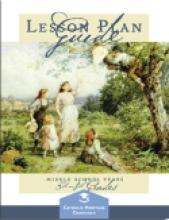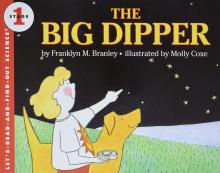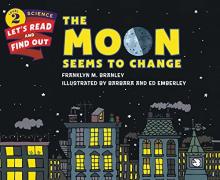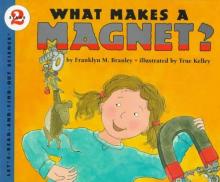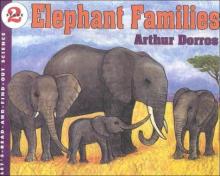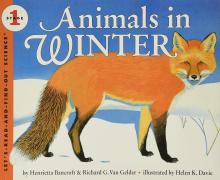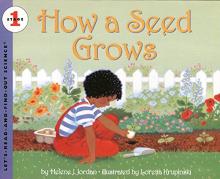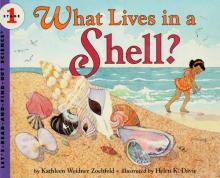Science Elementary
CHC Lesson Plan Guide: Middle School Years
I have just finished planning the school year for my 5th and 8th graders using the new CHC Lesson Plan Guide for the Middle School Years, and I have never had such a productive and enjoyable time of it! Normally, I like to plan, but there never seemed to be enough time or information in one place to do it effectively or efficiently. I prefer a customized curriculum for each of my students, emphasizing their particular interests while shoring up their weaker subjects. With six students alongside little ones, planning the school year's curriculum is a very time-consuming process. CHC has made all the difference for me this year.
The Lesson Plan Guide is just that–-a complete guide to designing your student's studies for each of the middle school (grades 5-8) years. There is structure within flexibility, and many options to appeal to a diversity of students with different gifts and talents. This is not a "school-in-a-box" that you can open and immediately put to work. You will need to spend a few hours for each grade level, looking over the courses that are detailed for you, and considering your student. But, this investment of a few hours will provide you, as the teacher, with a firm overview of the path you will take to meet the goals at the other end of the school year. Having that "big picture" helps tremendously when motivation lags. Using the CHC Lesson Planner (reviewed elsewhere) will simplify this customization further as they were designed to be used together.
Each of the four years is laid out with a plan for core subjects, non-core and elective subjects, enrichment materials, and parent resources. Sample schedules for each grade level are provided as an example of a balanced workload for a typical student. Unique to CHC are the Independent Study Charts that show the student which material he should be able to work on without direct teaching. Six detailed hands-on student courses are provided for up-to-date, beautiful Catholic textbooks in the areas of history, virtues, and Church history. As if that weren't enough value for the money, the Guide also offers wonderful teacher resources that provide the "what-you-need-to-know-to-teach" writing, science, and world history at these grade levels. Several authors contributed these resources, and the different approaches to these subjects are refreshing in their variety.
CHC has managed to produce a wonderful plan for middle-grade students that features the best characteristics that we have come to expect from them:
- do-able projects that the children both anticipate and cheerfully complete;
- a unique hands-on approach to most subjects that truly engage the student on several levels;
- an underlying structure that the teaching parent becomes familiar with as the year goes on;
- a progression in critical thinking, the ability to work independently for longer periods, and solid academics at a comfortable pace as the years pass.
This book contains:
Planning Guides:
- Fifth Grade: (18 pages)
- Sixth Grade: (18 pages)
- Seventh Grade: (18 pages)
- Eighth Grade: (20 pages)
- 5th Grade From Sea to Shining Sea Hands-On Study Guide (9 pages)
- 6th Grade All Ye Lands Hands-On Study Guide (9 pages)
- 7th Grade "The Virtue Tree" Student Course (44 pages)
- 7th Grade "Timeline of the Republic" Guide (19 pages)
- 8th Grade: 2000 Years of Christian History Study Guide (12 pages)
- 8th Grade: "Timeline of the Ages" (19 pages)
- "Jump Start Your Writing" (26 pages)
- "Science in a Nutshell" (24 pages)
- "World History Timeline" (46 pages)
Thomas A. Edison: Young Inventor
This is a fascinating and often humorous story of one of the most renowned inventors of all time. As a boy, Edison was fascinated by the world around him and full of questions about everything. Although he had many mentors as a boy, his first grade teacher reacted so negatively to his natural curiosity that his mother took him out of school and taught him at home. His adventures involving chemistry, trains and printing newspapers make for enjoyable and interesting reading. Edison was clearly a boy of creativity and ingenuity and a positive role model for children of today in sharing Edison's scientific interests and natural curiosity. My six year old boy, in particular, was completely enthralled when we read this story aloud.
Copyrights 1947/1959. Several later printings.
The Big Dipper
A very simple science book for children with cartoon-like pictures (nice cartoon, not cheezy-cartoon) that introduces some basic concepts about the stars. The very simple story line discusses looking at the night sky, that you see different stars in the summer and winter, where the big dipper got it's name, the names of the stars that make up the big dipper, how people can find direction from the North Star and the traditional constellation Ursa Major that the Big Dipper belongs to. The language is very simple, but not at all dumbed down - especially appropriate for preschool.
The Moon Seems to Change
This book, through simple illustrations and very readable text, gives young children (approximately Kindergarten thru third grade) an excellent explanation of the moon and the changes we can easily observe in it during a month. What often seem like complex concepts - the phases of the moon and its movement relative to the earth - are made very understandable through the text and a very simple experiment involving an orange stuck onto a pencil (a styrofoam ball stuck onto a chopstick worked quite well for us with less mess) and a flashlight. Naturally, it's recommended to do some real observations along with the book.
Many editions, 1960 onwards.
What Makes a Magnet?
What Makes a Magnet? constitutes a fairly substantial introduction to magnets for children approximately ages 5 to 9. They are invited to do a little discovery for themselves by doing some "fishing" with a magnet in a box of miscellaneous objects and see what things the magnet will pick up. The book goes on to explain that magnets pick up, not everything made of metal, but objects which contain iron in particular. Also explained are how to make your own magnet and compass, the poles of magnets and the earth, and the history of the discovery of the first magnets (lodestones) and how they were used for early navigation. This is a very nice early science book (despite a few "corny" pictures) because of the rich content in a simple format and how the book actively involves the child in the learning process.
Elephant Families
This book focuses on elephant's care for and interaction with each other with a significant emphasis on elephants being killed by poachers.
Unlike the interesting scientific information designed to impart facts and help children develop an interest in science (as I've come to expect from the Let's Read-and-Find-Out Science Series) this book gets lost in the mediocrity of environmentalism by giving children a sort of emotional attachment to elephants (by over-emphasizing their slight similarities with people) and shocking them with details about how and why people kill elephants and a somewhat gruesome (relative to the age-level) picture of a truck filled with blood-stained elephant tusks. Rather disappointing altogether.
Animals in Winter
A beautifully illustrated look at where various animals go when it snows and how they prepare for winter. We learn details of the migration of various animals (such as birds, butterflies and bats), animals that hibernate, animals that store up food for the winter and animals that have to find their food throughout the winter. Includes instructions for feeding birds and other wild animals in your own backyard.
How a Seed Grows
A very simple, charming book that explains to young children what seeds are and takes them through the development of some bean seeds. The growth present each day is illustrated in the book and the child is invited to try grow the beans themselves and watch the progress in real life. The book also introduces children to different kinds of seeds (for trees, flowers, vegetables, etc.), and how each seed will grow into the same kind of plant that it came from, and the basic things necessary to make a plant grow.
What Lives in a Shell?
This beautifully illustrated book, designed for preschool and kindergarten, explains different kinds of shells and the creatures that inhabit them. The shells are compared to the shelter occupied by people and by other animals. We learn that some shells do grow larger along with certain animals while other animals must shed their out-grown shell in favor of a new one. Many shells are beautifully depicted and identified and the story-format of the text is very easy and interesting for young children to follow.

